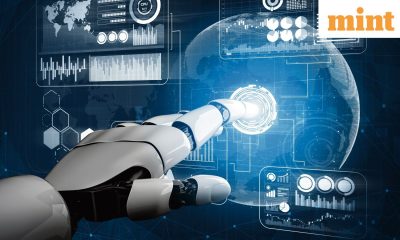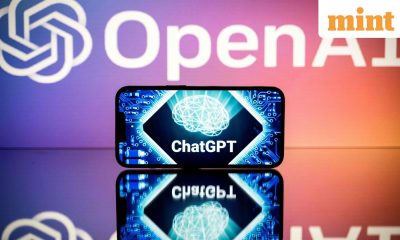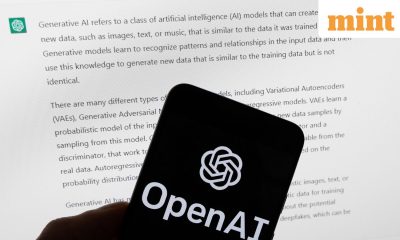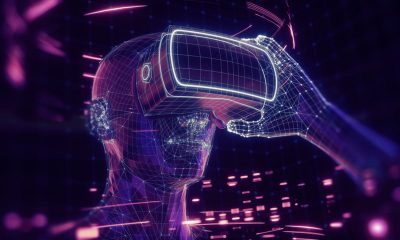Metaverse
Mint Explainer: Why Intel is betting on siliconomy, AI-enabled PCs – Crypto News
Jensen Huang, Nvidia’s co-founder, president and chief executive has been promoting ‘accelerated computing’, a term that blends central processing units (CPUs), GPUs and and other processors such as data processing units (DPUs) “together as equals in an architecture sometimes called heterogeneous computing”. Intel CEO Pat Gelsinger meanwhile is pushing ‘siliconomy’, a term he coined, to describe “… an evolving economy enabled by the magic of silicon where semiconductors are essential to maintaining and enabling modern economies”.
That said, while Nvidia is a fabless company that does not manufacture its own chips, Intel has its own foundries and makes its own chips. Nevertheless, both the terms mentioned above simply imply that AI is here to stay and that the companies designing or making chips will leave no stone unturned in grabbing a bigger slice of the AI cake.
The opportunity is huge. According to a 22 August note by research firm Gartner, semiconductors designed to execute AI workloads will represent a $53.4 billion revenue opportunity in 2023, an increase of 20.9% from 2022.
Alan Priestley, VP analyst at Gartner, attributes the growth to the developments in generative AI and the increasing use of a wide range AI-based applications in data centres, edge infrastructure and endpoint devices, which require high-performance GPUs and optimised semiconductor devices. Gartner predicts that AI semiconductor revenue may touch $67.1 billion in 2024 and $119.4 billion by 2027, which is more than double the size of the market in 2023.
Nvidia has been able to go beyond providing GPUs to just the gaming sector and leveraging GPU architecture to create platforms for scientific computing, autonomous vehicles, robotics, metaverse and 3D internet applications, among others. Nvidia’s GPUs feed industries are equally varied, from airports to food and, of course, OpenAI’s ChatGPT, which has become the poster child of generative AI.
View Full Image
Intel, for its part, has unveiled an array of technologies to make AI more accessible for individuals and companies, and for edge (closer to the user devices), network and cloud computing workloads. These will include AI-enabled Intel PCs that will ship in 2024. Intel’s portfolio of AI-enabling hardware and software includes CPUs, GPUs and accelerators, besides the oneAPI programming model, OpenVINO developer toolkit and libraries that empower the AI ecosystem. Developers can use the Intel Developer Cloud to build, test and optimize AI and high-performance computing applications. They can also run small- to large-scale AI training, model optimization and inference workloads, according to Intel.
“AI represents a generational shift, giving rise to a new era of global expansion where computing is even more foundational to a better future for all,” said Gelsinger during his keynote at the Intel Innovation event. He added, “For developers, this creates massive societal and business opportunities to push the boundaries of what’s possible, to create solutions to the world’s biggest challenges and to improve the life of every person on the planet.” Simultaneously, he underscored how AI is helping to drive the siliconomy, saying silicon feeds a $574-billion industry that in turn powers a global tech economy worth almost $8 trillion.
Intel has lost ground to its semiconductor manufacturing rival, Taiwan Semiconductor Manufacturing Company (TSMC), which has helped its rivals AMD and Nvidia eat into its market share. Gelsinger, who began his career in 1979 at Intel, was to regain the company’s foundry mojo. He was the architect of the original 80486 processor, led 14 microprocessor programs and played key roles in the Intel Core and Intel Xeon processor families.
According to Gelsinger, Intel’s “five-nodes-in-four-years process development program is progressing well… with Intel 7 already in high-volume manufacturing, Intel 4 manufacturing-ready and Intel 3 on track for the end of this year”. Intel is also readying its 18A (1.8 nanometer class) and 20A (2 nanometer class) process nodes to stave off the competition.
The company has already demonstrated its intent to push Moore’s Law forward with new materials and new packaging technologies such as glass substrates which, when released in the “second half of this decade”, will allow for continued scaling of transistors on a package to help meet the need for data-intensive, high-performance workloads like AI and “keep Moore’s Law going well beyond 2030”. Named after Intel co-founder Gordon Moore, the law predicts that the number of transistors on an integrated circuit (chip) will double every two years with minimal rise in cost.

View Full Image
According to Intel, glass offers distinctive properties such as “ultra-low flatness and better thermal and mechanical stability, resulting in much higher interconnect density in a substrate”. A substrate is the base material of IC packages. Intel believes that these benefits will allow chip architects to create high-density, high-performance chip packages for data-intensive workloads such as AI.
Intel is also committed “to addressing every phase of the AI continuum,” according to Gelsinger, who added that this includes generative AI and large language models (LLMs). During this keynote, Gelsinger announced that a large AI supercomputer will be built entirely on Intel Xeon processors and 4,000 Intel Gaudi2 AI hardware accelerators, with Dell as its partner (Gelsinger was CEO of VMware, a Dell unit, before joining Intel), and Stability AI as the anchor customer. Intel unit Habana’s first-generation Gaudi deep-learning processors are an alternative to GPUs. Intel also previewed its 5th Gen Intel Xeon processors, to be launched on 14 December, which it hopes will power the world’s data centres.
Intel is building AI PCs, too. “AI will fundamentally transform, reshape and restructure the PC experience – unleashing personal productivity and creativity through the power of the cloud and PC working together,” Gelsinger said, adding, “We are ushering in a new age of the AI PC.” The new AI PCs will sport Intel Core Ultra processors, code-named Meteor Lake, featuring Intel’s first integrated neural processing unit (NPU) “for power-efficient AI acceleration and local inference on the PC”. Acer is already working on powering its laptops with Core Ultra processors, according to Jerry Kao, the company’s chief operating officer.
Intel, meanwhile, also demonstrated a laptop running a not-yet-released 15th Generation Core processor, codenamed Lunar Lake, while also speaking about the Panther Lake CPU that will be released after it.
-

 Cryptocurrency1 week ago
Cryptocurrency1 week agoIlluminating progress: Is a $140K income ‘poor’? – Crypto News
-
Technology6 days ago
Crypto Lawyer Bill Morgan Praises Ripple’s Multi-Chain Strategy as RLUSD Hits $1.1B – Crypto News
-

 Blockchain6 days ago
Blockchain6 days agoAnalyst Reveals What You Should Look Out For – Crypto News
-

 Technology1 week ago
Technology1 week agoSamsung Galaxy S25 Ultra 5G for under ₹80,000 on Flipkart? Here’s how the deal works – Crypto News
-

 others1 week ago
others1 week agoGold holds strong at $4,200 as Fed-cut anticipation builds – Crypto News
-
others6 days ago
Breaking: Labor Department Cancels October PPI Inflation Report Ahead of FOMC Meeting – Crypto News
-

 Cryptocurrency6 days ago
Cryptocurrency6 days agoArgentina moves to reshape crypto rules as banks prepare for Bitcoin services – Crypto News
-

 Cryptocurrency1 week ago
Cryptocurrency1 week agoUK recognises crypto as property in major digital asset shift – Crypto News
-
others1 week ago
Bitcoin Price Forecast as BlackRock Sends $125M in BTC to Coinbase — Is a Crash Inevitable? – Crypto News
-

 Cryptocurrency1 week ago
Cryptocurrency1 week agoCrypto Holiday Gift Guide 2025 – Crypto News
-

 Blockchain4 days ago
Blockchain4 days agoStripe and Paradigm Open Tempo Blockchain Project to Public – Crypto News
-

 Technology1 week ago
Technology1 week agoWorking on a screen all day? These 8 LED monitors in Dec 2025 are kinder on your eyes – Crypto News
-
others1 week ago
Morgan Stanley Turns Bullish, Says Fed Will Cut Rates by 25bps This Month – Crypto News
-

 Cryptocurrency1 week ago
Cryptocurrency1 week agoFlorida Appeals Court Revives $80M Bitcoin Theft – Crypto News
-

 Blockchain4 days ago
Blockchain4 days agoBMW Helps JPMorgan Drive Blockchain-Based FX Payments – Crypto News
-
others1 week ago
XRP Price Prediction As Spot ETF Inflows Near $1 Billion: What’s Next? – Crypto News
-

 others1 week ago
others1 week agoThe rally to 7120 continues – Crypto News
-

 Blockchain1 week ago
Blockchain1 week agoBitcoin Buries The Tulip Myth After 17 Years: Balchunas – Crypto News
-

 Cryptocurrency7 days ago
Cryptocurrency7 days agoWhy Ethereum strengthens despite whale selling – Inside Asia premium twist – Crypto News
-

 others6 days ago
others6 days agoNasdaq futures hold key structure as price compresses toward major resistance zones – Crypto News
-

 others6 days ago
others6 days agoNasdaq futures hold key structure as price compresses toward major resistance zones – Crypto News
-
Business1 week ago
What’s Next for Dogecoin Price After Whales Scoop 480M DOGE? – Crypto News
-

 Blockchain1 week ago
Blockchain1 week agoN3XT Launches Blockchain-Powered Bank | PYMNTS.com – Crypto News
-

 Cryptocurrency1 week ago
Cryptocurrency1 week agoCoinDCX data reveals India’s rising appetite for diversified digital assets – Crypto News
-

 Technology1 week ago
Technology1 week agoCloudflare Resolved Services Issues Caused by Software Update – Crypto News
-
others1 week ago
Colombia Consumer Price Index (YoY) below forecasts (5.45%) in November: Actual (5.3%) – Crypto News
-
Technology1 week ago
Solana Price Outlook: Reversal at Key Support Could Lead to $150 Target – Crypto News
-

 Technology1 week ago
Technology1 week agoFrom security camera to gaming hub: 6 Easy tricks to make your old smartphone genuinely useful again – Crypto News
-

 others1 week ago
others1 week agoCanadian Dollar soars after upbeat labor report – Crypto News
-
others1 week ago
$1.3T BPCE To Roll Out Bitcoin, Ethereum and Solana Trading For Clients – Crypto News
-

 others7 days ago
others7 days agoStocks survive PCE and consumer data – FOMC too? – Crypto News
-
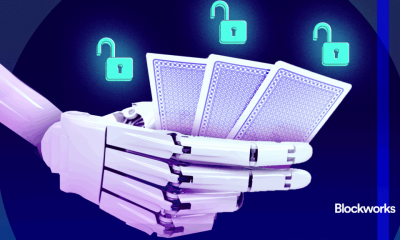
 Cryptocurrency6 days ago
Cryptocurrency6 days agoThursday links: Prediction markets, agent hackers, quantum risks – Crypto News
-
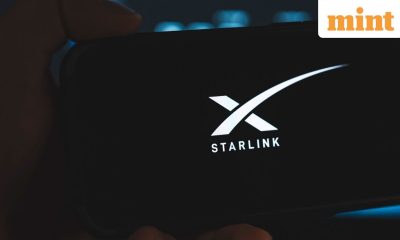
 Technology6 days ago
Technology6 days agoStarlink India pricing revealed: How much does monthly plan cost and what are its benefits? – Crypto News
-

 Technology1 week ago
Technology1 week agoApple Watch’s latest update drops a lifesaving feature for Indian users: here’s how it works – Crypto News
-
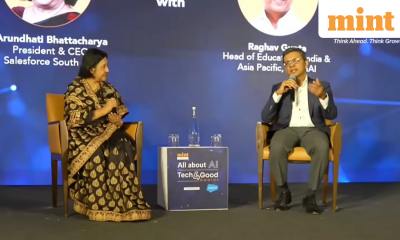
 Metaverse1 week ago
Metaverse1 week agoBetter Tomorrow: How OpenAI is reimagining education and inclusion for the digital age – Crypto News
-
Business1 week ago
Bitcoin, ETH, XRP, SOL’s Max Pain Price as Over $4B Options to Expire – Crypto News
-
Business1 week ago
Is ZCash Price Set for a Bigger Rally After Its 10% Surge on the Bitget Listing? – Crypto News
-

 Cryptocurrency1 week ago
Cryptocurrency1 week agoGlassnode report reveals Bitcoin’s growing stability amid ETF activity and RWA expansion – Crypto News
-
Technology1 week ago
Peter Brandt Hints at Further Downside for Bitcoin After Brief Rebound – Crypto News
-
others1 week ago
United States Consumer Credit Change came in at $9.18B, below expectations ($10.5B) in October – Crypto News
-
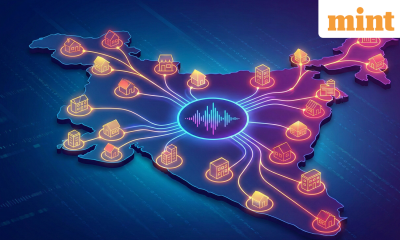
 Technology7 days ago
Technology7 days agoTier 2 and Tier 3 cities drive over 90% of engagement on audio social platforms in India, says report – Crypto News
-
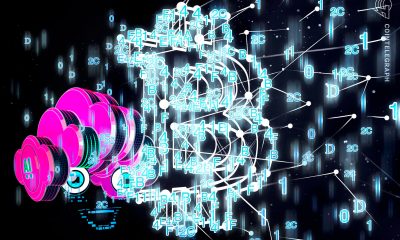
 Blockchain6 days ago
Blockchain6 days agoBittensor Set for First TAO Halving on Dec. 14 – Crypto News
-

 Blockchain6 days ago
Blockchain6 days agoBitcoin Santa Rally Talk Meets Last FOMC of 2025 – Crypto News
-

 Blockchain6 days ago
Blockchain6 days agoEthereum Founder Breaks Silence With Major Upgrade Proposal – Crypto News
-
Business6 days ago
Solana Price Set for $150+ as Bullish Sentiment Rises in Crypto Market – Crypto News
-
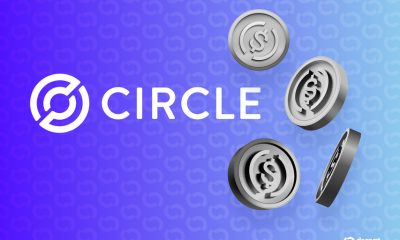
 Cryptocurrency5 days ago
Cryptocurrency5 days agoCircle Wins ADGM License, Taps Former Visa Executive to Lead Middle East Push – Crypto News
-

 Cryptocurrency5 days ago
Cryptocurrency5 days agoCircle Wins ADGM License, Taps Former Visa Executive to Lead Middle East Push – Crypto News
-

 Technology5 days ago
Technology5 days agoSatya Nadella meets PM Modi, Microsoft commits $17.5 billion on India’s AI future – Crypto News
-

 Technology5 days ago
Technology5 days agoSatya Nadella meets PM Modi, Microsoft commits $17.5 billion on India’s AI future – Crypto News
-
others5 days ago
Bitcoin, Ethereum, XRP, Solana Rally Ahead of Fed Rate-Cut Decision – Crypto News

